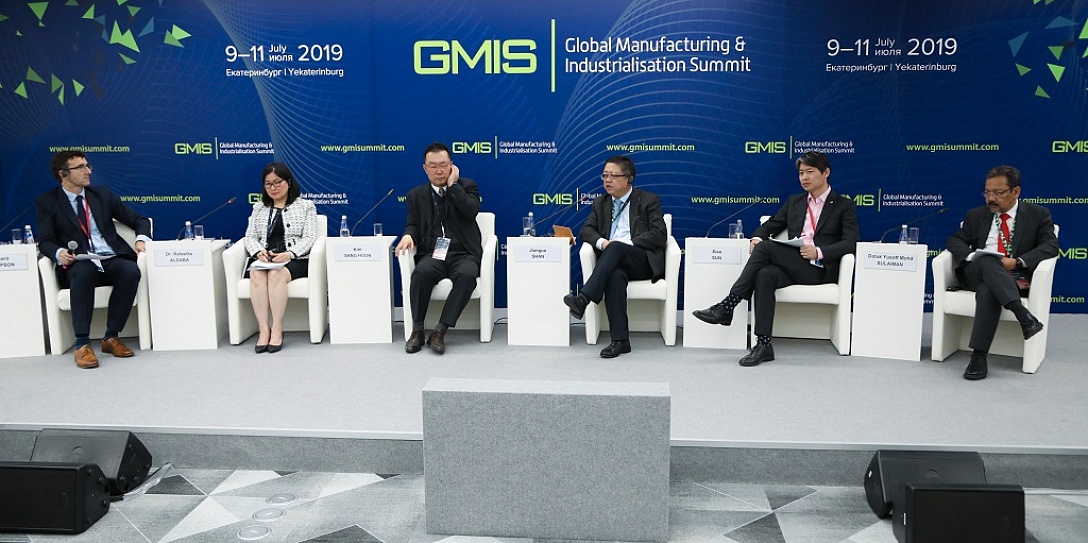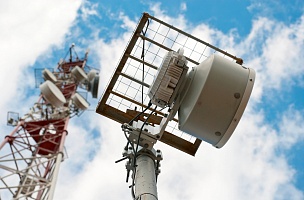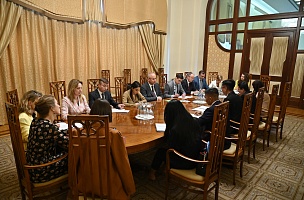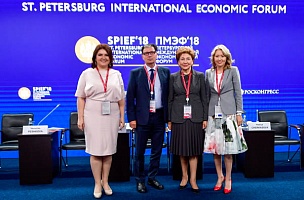The ‘Made in Asia — What Now, What next?’ panel discussion took place on day two of GMIS 2019, 10 July 2019.
The panellists — representatives of countries in the Asia-Pacific region — spoke about their vision of the current state of their economies and about the outlook for their development on the eve of the fourth technological revolution.
The Republic of the Philippines, with a population of more than 100 million people, is building an innovative Industry 4.0-based strategy. The strategy looks to new technologies, industries, and clusters, to developing human capital and to strengthening the partnership between government and business. Production increased in the country in 2018 by 6%, despite the low economic activity and uncertainty around the globe. The country’s goal is to continue industrialization with a key focus on electronics, semiconductors, and promising start-ups. The Philippines is ready for such work despite a risk of the government’s minimizing support.
South Korea is actively focused on various industries and fruitfully engaged in research across all sectors of the economy. Nowadays, a broad discussion is taking place in Korea on the issue of the fourth technological revolution and digitalization and working out the right strategy for diversifying production and integrating into the world economy. The country is moving from high economic growth to a strategy of more sustainable growth and development.
Experts from the People’s Republic of China have noted a decline in the country’s trade turnover and have spoken of serious pressure on the trade of Chinese products on world markets. In this regard, China plans to focus more on the Asian market.
China’s strategy is to produce the best innovative and high-tech products in the world based on their own high-quality human resources. China will strive for openness and attempt to provide the world with as many new options as possible.
Experts believe the Belt and Road initiative of China’s President Xi Jinping is a strategic project that will test the willingness of many states to cooperate in implementing a global international project.
Speakers from China spoke of the need to develop the renewable energy industry to protect the Asian environment from harmful emissions. To this end, it is planned to implement new projects in the field of recycling and cleaning of emissions.
Malaysia is a small country with a population of about 30 million people. Previously, its economy was based on agriculture, but today it seeks to industrialize and diversify its existing electronic industry. Malaysia is actively developing the automotive and aerospace industries and is willing to work with other ASEAN countries to develop its industrial sector.






